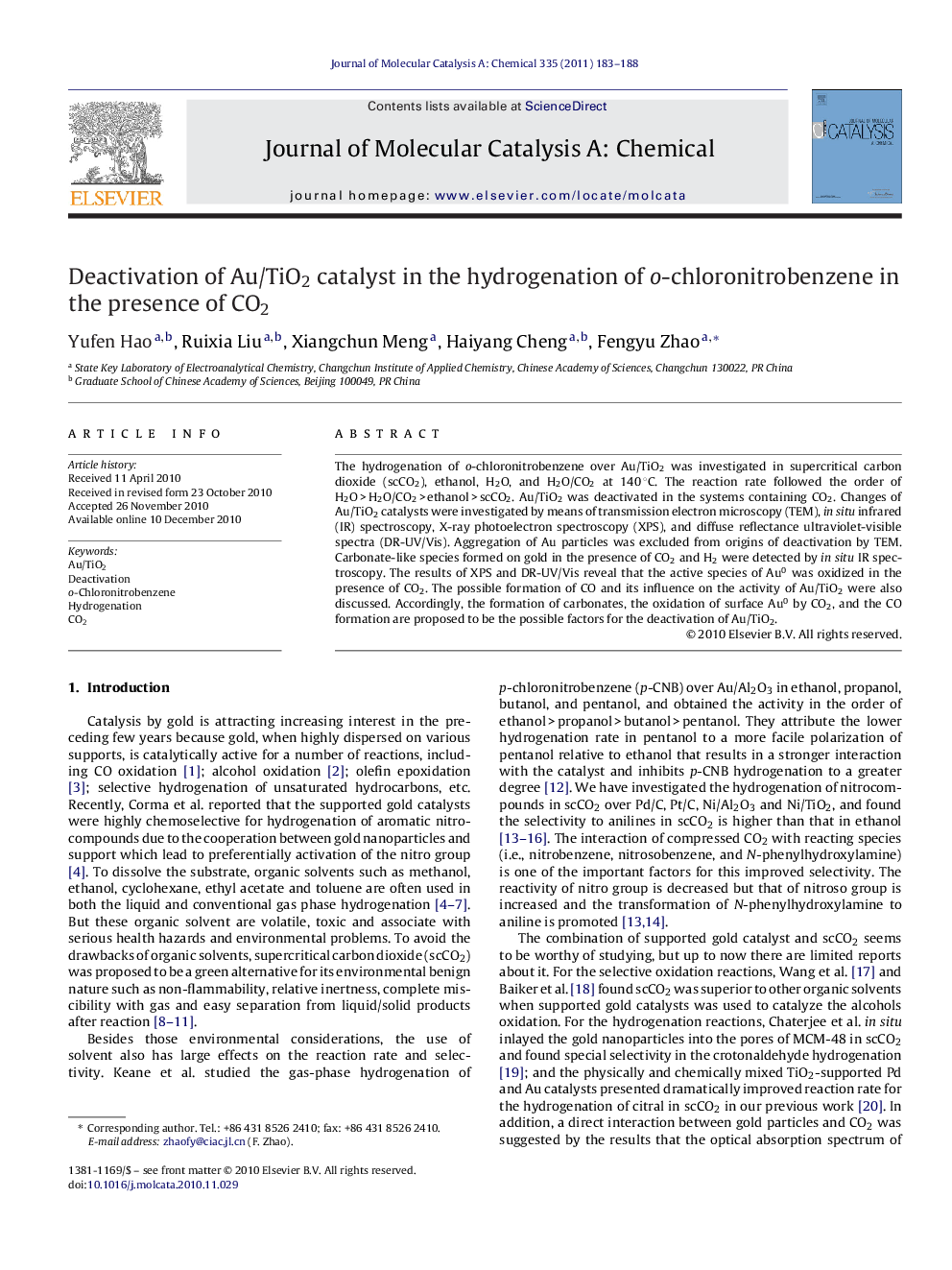| Article ID | Journal | Published Year | Pages | File Type |
|---|---|---|---|---|
| 66581 | Journal of Molecular Catalysis A: Chemical | 2011 | 6 Pages |
The hydrogenation of o-chloronitrobenzene over Au/TiO2 was investigated in supercritical carbon dioxide (scCO2), ethanol, H2O, and H2O/CO2 at 140 °C. The reaction rate followed the order of H2O > H2O/CO2 > ethanol > scCO2. Au/TiO2 was deactivated in the systems containing CO2. Changes of Au/TiO2 catalysts were investigated by means of transmission electron microscopy (TEM), in situ infrared (IR) spectroscopy, X-ray photoelectron spectroscopy (XPS), and diffuse reflectance ultraviolet-visible spectra (DR-UV/Vis). Aggregation of Au particles was excluded from origins of deactivation by TEM. Carbonate-like species formed on gold in the presence of CO2 and H2 were detected by in situ IR spectroscopy. The results of XPS and DR-UV/Vis reveal that the active species of Au0 was oxidized in the presence of CO2. The possible formation of CO and its influence on the activity of Au/TiO2 were also discussed. Accordingly, the formation of carbonates, the oxidation of surface Au0 by CO2, and the CO formation are proposed to be the possible factors for the deactivation of Au/TiO2.
Graphical abstractAu/TiO2 catalyst was found deactivated in scCO2. The results of XPS, TEM and DR-UV/Vis indicated that the formation of carbonates, the oxidation of surface Au0 by CO2, and the CO formation might be the possible factors for the deactivation of Au/TiO2.Figure optionsDownload full-size imageDownload high-quality image (117 K)Download as PowerPoint slideResearch highlights▶ The catalytic performance of Au/TiO2 catalyst was discussed in the presence of supercritical carbon dioxide. ▶ Au/TiO2 is confirmed to deactivate during the hydrogenation of o-chloronitrobenzene in scCO2. ▶ Several factors were proposed to arouse the decrease of activity of Au/TiO2 catalyst: (a) carbonate-like species are formed on gold; (b) the Au0 species is partially oxidized by CO2 even in the presence of H2. (c) CO might be formed in the hydrogenation process and poisons some active sites.
